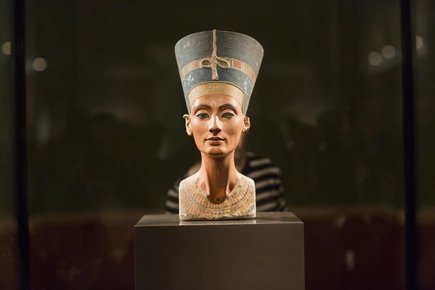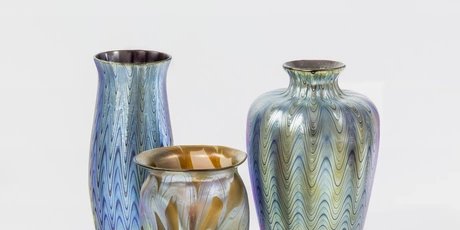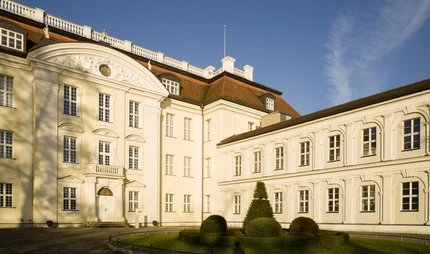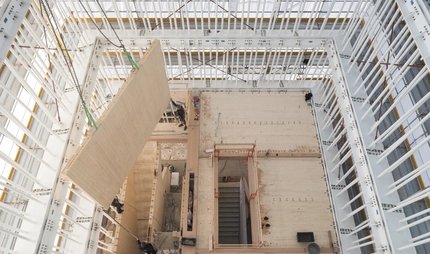
Bröhan Museum
Art Nouveau, Art, Design
The Bröhan Museum in Berlin displays a precious collection of furniture, porcelain, glass, ceramics, metalwork and art objects from the Art Nouveau, Art Deco and Functionalist periods, plus the art of the Berlin Secession. The temporary exhibitions in the Bröhan Museum focus on the origins of modernism and show how early modernism increasingly developed into functionalism.
The Bröhan-Museum houses exquisite art and crafts dating from 1880 to 1940. Witness the playful ornamentation of art nouveau, the clear simplicity of functionalism and the refined elegance of art deco. In the Bröhan-Museum you'll find glassworks by Émile Gallé, Meissen Porcelain and paintings by the Berlin Secessionists. As you will see when you enter the exhibition rooms, the focus is on crafts: entire rooms are adorned with furniture ensembles. From ivory-coloured sofas to curved writing desks made from exotic wood, be transported back to eras of elegance and style.
A passionate collector: Karl Bröhan
On the website for the Bröhan-Museum, founder Karl Bröhan states,
'I noticed that there was a scarcely known treasure in the years around 1900 that was only waiting to be unearthed.'
This is the quote with which the Bröhan Museum introduces itself on its website. And indeed, it tells of the art collector's great devotion to uniting works of art from Art Nouveau and Art Deco as well as the Berlin Secession.
On his 60th birthday, Bröhan donates the entire collection to the city. In 1983, the Bröhan Museum is opened in a very special late classicist building: The former barracks are part of the building ensemble of Charlottenburg Palace. Since 1994, the Bröhan Museum has officially been the "Berlin State Museum of Art Nouveau, Art Deco and Functionalism".
Displaying decorative excellence across three floors
The three floors of the museum are carefully arranged with complementary designs and matching styles. The displays show each piece of unique design in its functioning form, with decorative extras such as the glasswork of Gallé to highlight functionality. Displays are assembled to give the impression of an entire room arrangement. Mother-of-pearl coloured upholstery chairs stand next to tables made of rosewood. Silverware, floral ornaments, and period lamps are found in the rooms.
You start your tour on the ground floor, where everything revolves around Art Nouveau. Here you will find paintings by Hector Guimard and Eugène Gaillard, porcelain from the Königliche Porzellan-Manufakturen Berlin and glass art by Emile Gallé. In addition, vases from the School of Nancy: in an ensemble, the French works of art look like a meadow of flowers made of glass.
The first and third floors continue with Art Deco and Functionalism - moving away from the curved, playful ornaments of Art Nouveau to the straight edges and abstract forms of Modernism. Silver and metal decorative objects and the coffee service by Edgar Brandt or by Jean Puiforcat appear elegant and simple. The ceramics by the Deutscher Werkbund and the furniture by Gerrit Rietveld are early examples of functionalism. In another room you will encounter the Berlin Secessionists around Hans Baluschek with watercolours and illustrations. Works by Karl Hagemeister, Lesser Ury and Walter Leistikow hang here.

Must-see artworks in the Bröhan-Museum
- The dining room display with furniture by Émile-Jacques Ruhlmann, circa 1900
- The silver coffee and tea service by Karl Heubler, before 1933
- The filigree glass vases by Émile Gallé, circa 1903
- Gerhard von Ruckteschell's rustic and playful oak furniture, circa 1928
- The painting 'Grunewaldsee' by Walter Leistikow, 1895
Things to see in the museums nearby
The Charlottenburg Palace ensemble is home to a number of museums, all a short distance from the Bröhan-Museum. Originally a summer residence for Friedrich I, the palace is the largest and most magnificent in Berlin and contains a vast art collection. The Berggruen Museum, next to the Bröhan-Museum, contains a collection from the art dealer Heinz Berggruen. It is chiefly devoted to classical modernist art. A highlight of the collection is the 'Lying Nude' by Picasso dating back to 1942. Directly opposite from the Bröhan-Museum is the Scharf-Gerstenberg collection boasting world-famous artworks by surrealists including Goya, Max Ernst, and Dalí. Occupying the Villa Oppenheim, the Charlottenburg-Wilmersdorf Museum looks at the history of the city and the sister districts of Charlottenburg and Wilmersdorf, united since 2001.
For something a little different, visit the Gipsformerei on Sophie-Charlotte Straße, a plaster-moulding workshop. Take home your very own piece of art or a plaster replica of one of the Berlin museums' most famous residents, Nefertiti. The area is also home to the Ceramics Museum Berlin, housing exquisite ceramic objects from the 19th and 20th centuries.
Tips for visiting the Bröhan-Museum
Visitors with a Berlin WelcomeCard receive a 25% discount on admission, while the Museum Pass gives you free entry on three consecutive days. Entry is free of charge for children and young people under the age of 18. Free tours of the special exhibitions are offered at 5:00 p.m every Wednesday. Guided tours, of about an hour's duration, can be undertaken in German, English, French and Turkish, and tours for the hard-of-hearing can be arranged upon request. The museum and surrounding area are easily reached by public transport, either by bus, underground, or S-Bahn. Take the 109 or M45 buses from Zoologischer Garten Station directly to Charlottenburg Palace. Richard-Wagner-Platz U-Bahn station (underground) and Westend S-Bahn station (overground) are both a short walk from the museum.
Comprehensive information on Berlin Modernist buildings and their history can be found on our website:
On Berlin Modernist Architecture
Find out more about the city’s neighbourhoods with our Going Local Berlin app.
Opening hours
| Tuesday | |
|---|---|
| Wednesday | |
| Thursday | |
| Friday | |
| Saturday | |
| Sunday |



